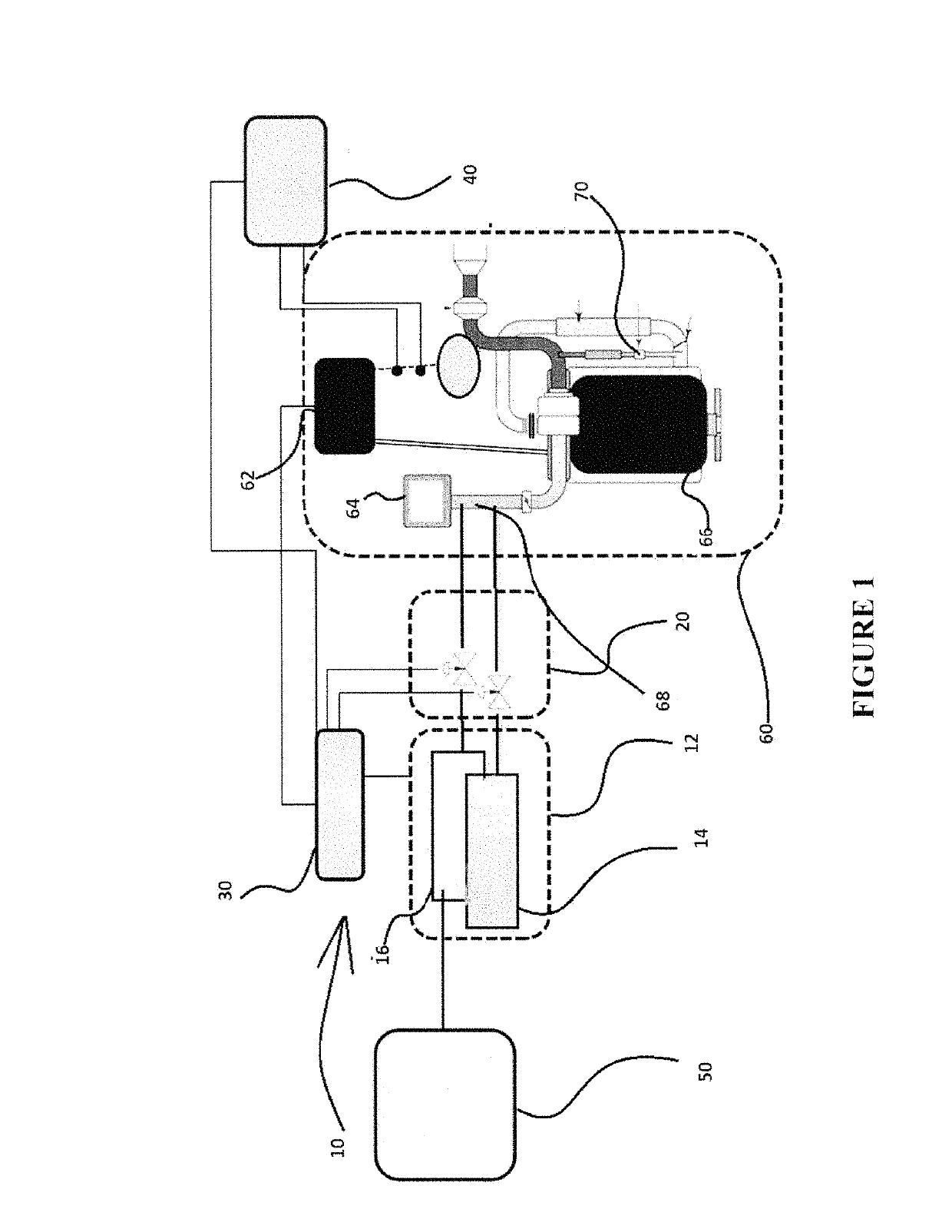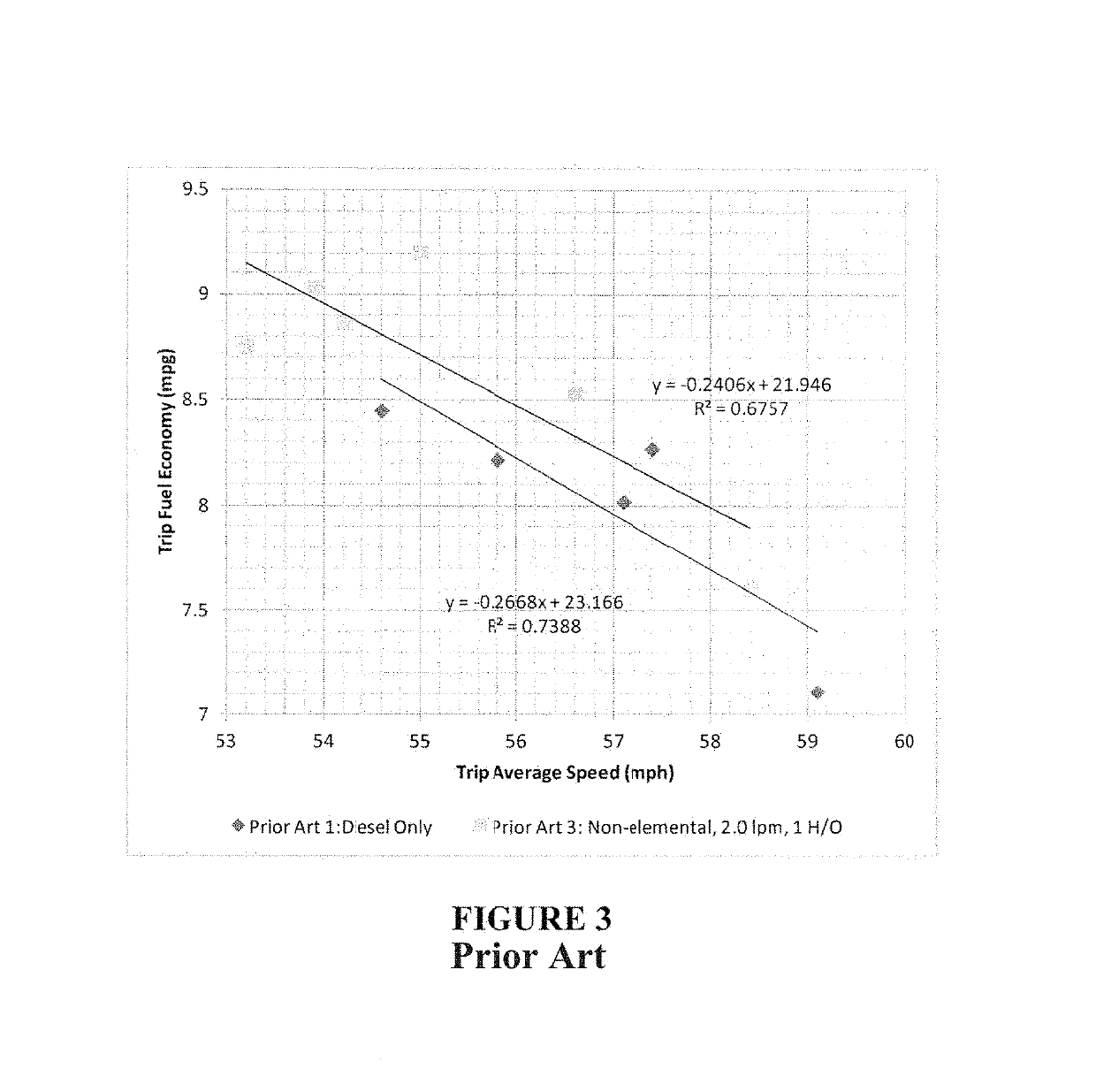Method and system for improving fuel economy and reducing emissions of internal combustion engines
a technology of internal combustion engine and combustion engine, which is applied in the direction of fuel system, fuel supply apparatus, non-fuel substance addition to fuel, etc., can solve the problems of lower overall fuel economy, lower overall fuel economy and efficiency, and higher greenhouse gas emissions that vary, so as to achieve a wide range of application
- Summary
- Abstract
- Description
- Claims
- Application Information
AI Technical Summary
Benefits of technology
Problems solved by technology
Method used
Image
Examples
Embodiment Construction
[0067]FIG. 1 is a schematic drawing showing the basic elements of the monitoring and control system 10 according to the present invention and their integration into an existing or new diesel engine system although, as highlighted, the inventive system is equally suitable for all combustion engines operating on carbon-based fuels. Specifically, the invention requires a source 12 of pure or almost pure (at least 90%) H2, shown in FIG. 1 as item 16, and O2, shown in FIG. 1 as item 14. These preferably include on-board or local, on-demand water electrolysis devices (wet or dry technology) or bulk storage or any other source. These gases are metered at specific ratios and volumes by metering device 20 and depending on control logic 30 that utilizes operating conditions received, for example, from the engine electronic control module (“ECM”) 62 including for example, engine load, engine rotations per minute (RPMs) and other readily available and independently assessed engine data from the...
PUM
 Login to View More
Login to View More Abstract
Description
Claims
Application Information
 Login to View More
Login to View More - R&D
- Intellectual Property
- Life Sciences
- Materials
- Tech Scout
- Unparalleled Data Quality
- Higher Quality Content
- 60% Fewer Hallucinations
Browse by: Latest US Patents, China's latest patents, Technical Efficacy Thesaurus, Application Domain, Technology Topic, Popular Technical Reports.
© 2025 PatSnap. All rights reserved.Legal|Privacy policy|Modern Slavery Act Transparency Statement|Sitemap|About US| Contact US: help@patsnap.com



